Pensions are very tax efficient
You normally get:
- Tax relief on the money you pay in
- 25% tax free cash when you take your money (up to a limit of £268,275)
- And there's no tax on any growth
But there are limits
You can normally get tax relief on money you pay into your pension, as long as:
- You don’t pay in more than 100% of your earnings
- All payments in, including from your employer, don’t exceed your Annual Allowance, which is £60,000 a year for most people
So it’s worth considering paying more in before you stop or reduce work and your earnings drop.
Are your savings in the most tax efficient place?
Payments into your pension plan don’t have to come from your salary.
If you want to, you can move other savings – for example, money in a bank account or ISA – into your pension. You'll get tax relief on this as long as you are within your Annual Allowance.
Money in a pension is invested. You need to be comfortable with the risks if you're moving cash savings into a pension.
Sam, a basic rate taxpayer
Sam pays £10,000 from his savings into his pension.
Basic rate tax relief is added automatically, giving him £12,500 in his pension.
When Sam retires, he gets 25% of this tax free. The rest is taxable.
This means he gets £10,625 if he’s still a basic rate taxpayer in retirement — so he’s £625 better off.
-
Sam is
£625
better off by adding money to his pension
Erica, a higher rate taxpayer
Erica pays £10,000 from her savings into her pension.
Basic rate tax relief is added automatically, giving her £12,500 in her pension.
Erica earns £75,000 a year. She claims £2,500 in higher rate tax relief through her tax return. She puts this in the bank.
When Erica retires, she gets 25% of her pension tax free. The rest is taxable.
If she’s now a basic rate taxpayer, she gets £10,625 from her pension – and still has £2,500 in the bank. So she’s £3,125 better off.
Extra tax relief is linked to the tax you pay. You can normally claim extra tax relief on pension contributions up to the amount of income you pay higher or additional rate tax on.
To keep things simple, these examples ignore charges and any investment growth. Tax treatment will depend on where you are in the UK and your personal circumstances.
Things to consider
- Pensions are invested
This means they can grow – but this isn’t guaranteed, and investments can go down as well as up. If you’re moving cash into a pension, you need to be comfortable with how it will be invested and the charges you’ll pay. Any pension growth is tax free, just like in an ISA. - Carry forward can help you
If you have significant savings you want to move into your pension, you may be able to carry forward any unused allowance from the previous three tax years.
As soon as you take any taxable income from your pension (even if you’re still earning), your Annual Allowance drops to a maximum of £10,000 a year and you can't use carry forward. - When the Annual Allowance is less than £60,000
If you earn over £200,000 a year, your Annual Allowance may start to taper – check if this applies to you.
If you take taxable income from your pension, your Annual Allowance normally drops to £10,000 a year. - If you have no income
You can normally still pay up to £3,600 a year (including tax relief) into your pension. - You normally can't take your pension money until age 55 (57 from 6 April 2028)
So make sure you won’t need to access any money you pay in before that time. - There's a £268,275 tax free Lump Sum Allowance
This means that if your pension is worth more than £1,073,100, paying more in normally won’t increase the amount of tax free cash you can take. - If you're unsure, consider financial advice
A financial adviser can create a personal plan that takes into account your retirement goals, including tax efficiency.
The information here is based on our understanding in August 2025. Tax rules can change and will depend on your personal circumstances.
